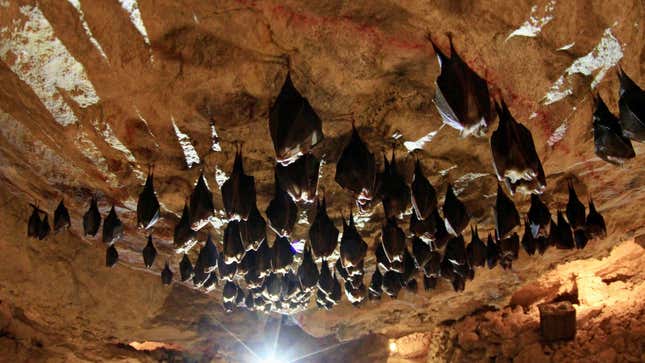
A UK-based team says they were able to pull genetic material from the air and correctly identify the species it belonged to, an exciting leap for the field of environmental DNA. The technique of sampling an environment for DNA to figure out what organisms inhabit it, known as environmental DNA or eDNA, is regularly used to study terrestrial and marine environments: Simply see what molecular fragments can be found on a forest floor or floating in the sea, and you’ll know what creature recently passed through. Now, they’ve taken DNA directly from the air in an animal’s burrow.
Published today in the journal PeerJ, the research describes a lab set-up in which they were able to detect airborne DNA. The test organisms were a group of naked mole rats, set up in a makeshift burrow of pipes and tanks at the Queen Mary University of London. The research team stuck a hose into the animals’ tank and pulled air into it, which fed into a filter usually used for marine eDNA sampling. Then, the researchers ran genetic testing on the filter (which substitutes for the animal tissue that normally would be tested for genetic material) and, to their surprise, were able to identify the rats purely from genetic material that was floating around in the burrow’s airspace.
“I tend to think of it a bit like soup,” said lead author Elizabeth Clare, a molecular ecologist at Queen Mary University of London, in a video call. “We’re in the soup, and it contains dust and pollen and bits of DNA floating around... It’s one of those things where you have to have a leap of faith to even try it.”
The team wasn’t sure they’d get anything from the experiment. While eDNA is commonplace in the realms of land and sea research, things move differently in the air. Molecular fragments need to be filtered out of the medium they’re floating in to be read, and things dissipate in air quickly if you’re not in an enclosed space (hence why outdoor coronavirus transmission is less likely than indoors). That’s why Clare’s team started with the mole rats, an enigmatic species that scuttles about in networks of narrow subterranean tunnels. After they successfully detected mole rat DNA in the tunnel’s air, they broadened their testing to the lab itself. They were able to pick up human DNA in the air—their own.
“The first question was pretty risky: Is there DNA in the air? The answer is yes, and we can capture it,” Clare said. “The next question has to get more risky: Can we do it under more difficult circumstances?”
The implications for airborne DNA detection are large. Clare does fieldwork with bats, whose habit of staying in dark, cavernous spaces or tiny chambers often prevents researchers from accessing bat colonies. eDNA in the air (to be called airDNA or maybe eDNAir—they’re working on it) would allow researchers to broaden their observational horizons. Wherever it’s employed, the molecular detection method serves as a sort of biological roll call where species can phone in rather than needing to be directly observed.
eDNA is a source of optimism for conservationists desperate to get a pulse on endangered or elusive animals. It’s useful for knowing all the characters in an ecological niche or understanding which animals survived disasters like the Australian wildfires. Down the road—way down it—Clare hopes that airborne DNA collection could help create a live map of biodiversity in a chosen area.